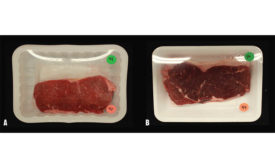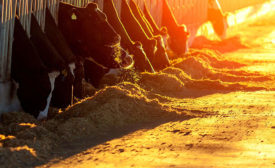Andrea R. English
Andrea R. English is with the Department of Animal and Food Sciences at Oklahoma State University, Stillwater.
ARTICLES
Meat Science Review
Effect of direct-fed microbial on Enterococci antibiotic resistance
Studying the antibiotic resistance of Enterococcus sp. in cattle feces as impacted by dietary supplementation with Lactobacillus salivarius L28.
Andrea R. English
Alejandro Echeverry
Jhones O. Sarturi
Tosha L. Opheim
Kendra K. Nightingale
Mark Miller
Mindy M. Brashears
January 19, 2018
Get our new eMagazine delivered to your inbox every month.
Stay in the know with The National Provisioner's comprehensive coverage of the meat and poultry processing industry.
SUBSCRIBE TODAY!Copyright ©2024. All Rights Reserved BNP Media.
Design, CMS, Hosting & Web Development :: ePublishing

